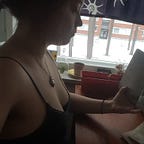The Ordinary World — Establishing A Starting Point When Writing Romance
As a genre, romance as a genre is often underrated and undervalued. One of the main reasons for this is that it is frequently associated with female readers and writers.
There is a long-standing bias against stories that are considered “feminine,” and romance novels have historically been seen as less valuable than other types of literature. This attitude can be seen in the way that romance novels are often relegated to a separate section of the bookstore, and in the way that they are frequently dismissed as frivolous or lacking in substance.
Another reason that romance is that it is often misunderstood. Many people assume that romance novels are simple and formulaic, with predictable plots and two-dimensional characters. While this may be true of some romance novels, it is not a characteristic of the genre as a whole — an assertion which feels obvious, yet apparently still needs to be said. Attempts to lump any genre in simple terms such as “sci-fi is x, fantasy is y”… quite honestly, I thought we’d outgrown that already.
Romance novels are one of the most popular genres in the world, consistently ranking near the top in terms of sales.
When it comes to writing a romance novel, one of the key elements is establishing the ordinary world of the main character, and how the romance acts as a disruptor to that world. This is a crucial aspect of the Hero’s Journey, a narrative structure popularized by Joseph Campbell in his book “The Hero with a Thousand Faces.” In this article, we’ll explore why establishing the ordinary world is important and how to effectively use romance as a disruptor in your story.
My World Is Ordinary — For Me!
The term “ordinary world” refers to the life of the main character before they embark on the events of the story. This is where the reader is introduced to the main character, their everyday routine, their goals and relationships. What do they want, what are they afraid of — their life is stable, but often imperfect. What life isn’t?
It is important that we see what the main character’s life both with and without the romantic interest being involved. Most of us have lives outside the romantic interest, and other things that bring us joy, annoyance and challenges.
This is where the beauty of meet-cute happens.
Romance as a Disruptor
Once the ordinary world has been established, it’s time to introduce the romance as a disruptor. This is where the story really begins to take shape. The romance disrupts the main character’s ordinary world by introducing a new element, a love interest, who challenges their beliefs, values, and goals.
The romance can take many forms, from a chance encounter with a stranger to a childhood friend who suddenly returns to town. Whatever the case may be, the romance must be introduced in a way that feels natural and believable.
I know — easier said than done. But if I were to offer some key elements, they key in here is not to create the perfect, happy story from the get-go. The meet-cute should create tension and conflict between the main character and the love interest, as tension is what drives story forward.
Harlequin Romances, arguably one of the most known romantic type of books, often follow the following formula: “Boy meets girl, boy loses girl on page 56, and by page 180, the book would end with a marriage proposal.” This does not happen without conflicts and tension!
Romance is not the happy thing that ends the story before it begins. Romance is the annoying little interruption in the peaceful ordinary world — and readers want to feel it is unavoidable.
The success of a romance story lies in the execution. The reader knows the main lovers are going to end up together, but they want to know how.
To achieve this successfully, the reader needs to know well the ordinary world the romance will change — undeniably, permanently, fundamentally.
I am the author of Said The Stars, an interactive romance fiction, as well as The Lovers Structure, a 10-step guide on how to write a romance story in a way that is satisfying for the reader!
